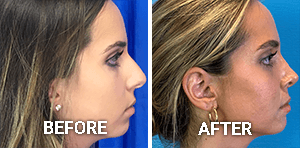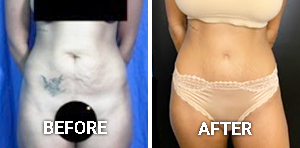Dr. Michael Omidi has performed many fat transfer procedures for rejuvenation of the face and enhancement of the buttocks and torso (called the Brazilian Butt Lift). Dr. Omidi is now employing this technique for enhancement of the breast.
How Does Fat Transfer to the Breast Work?
Just like enhancement of the face or buttocks, fat cells are harvested and transplanted to a new location in the body. The fat cells develop new blood supply and a new home. With the advent of new techniques that minimize the trauma on the fat cells, large amounts of fat can be transferred to a new location successfully resulting in a larger, more voluminous and feminine breasts.
What is the Brava System?
The Brava technique is a bra shaped suction apparatus which places 3-dimensional suction on the breasts that help expand the breast tissue and regenerate new vasculature. This is one example of tissue expansion used for making the breast tissue more adept to accepting fat cells. Using the Brava technique has been shown to make the breasts larger, increase vasculature to the breasts and retain more of the fat tissue transplanted into the breast. The recommended time is 2-10 weeks prior to fat transplantation and optional use for several weeks after. The use of the Brava System is not necessary and successful fat grafting can be achieved without it.
What are the Benefits over Breast Implantation?
Fat transplantation only requires needle-size incisions with a needle to harvest and transfer fat. No incisions or dissection like breast augmentation is required. Therefore there is less scarring and less risks associated with an operation that requires larger incisions and dissection.
Therefore risks associated with breast implants are eliminated. Those include infection of the implant, implant leakage, hardening of the breasts (capsular contracture), rippling and unnatural feel of an implant compared to the softer breast and fat tissue. Also risks such as nipple sensation loss and damage to the pectoralis muscle are eliminated
Am I a Candidate?
Any patient that would like breast augmentation is a candidate for fat transplantation to the breast. It is also an excellent technique to correct irregular contour in breasts with patients that have breast deformities such as Poland’s Syndrome or Tuberous Breast Syndrome. Fat transfer is a viable option for patients that have had complications with breast implants such as capsular contracture or infection.
Patients should be in good health, should have a breast evaluation and a mammogram if over 40, should not be pregnant, should not be a smoker and should have not breast fed for 6 months.
Safety and Concerns
One of the biggest concerns was the effects of fat transfer on mammographic detection of breast cancer. Radiologists look for calcifications as one of the findings of breast cancer. Fat transfer can also create calcifications. For years physicians were concerned that the calcifications from fat transfer can make the detection of cancers more difficult or create more false positives. Recent studies show that fat transfer to the breasts is safe. A comparison to patients that had breast reduction showed that fat transfer patients did not have any differences in diagnosis of abnormalities. The study also showed that scarring necessitating biopsies were significantly higher in breast reductions. This study shows that the previous concerns of fat grafting impeding mammographic cancer surveillance are unwarranted.
Who isn’t a Good Candidate?
There are little contraindications to this procedure. In general to all plastic surgery procedures, patients should be in good physical and mental health. Patients should not be pregnant and should have stopped breast feeding for at least 6 months.
What are the Risks of Fat Transfer to Breasts?
Fat transfer can result in cysts, infection, calcifications and possibility that the fat cells do not survive when transferred or migration of fat cells to other areas of the body.
References
- http://www.plasticsurgery.org/cosmetic-procedures/fat-transfer-breast-augmentation.html
- Rubin, J. Peter M.D.; Coon, Devin M.D.; Zuley, Margarita M.D.; Toy, Jonathan M.D.; Asano, Yuko M.D.; Kurita, Masakazu M.D.; Aoi, Noriyuki M.D.; Harii, Kiyonori M.D.; Yoshimura, Kotaro M.D Mammographic Changes after Fat Transfer to the Breast Compared with Changes after Breast Reduction: A Blinded Study Journal of plastic and reconstructive surgery May 2012 – Volume 129 – Issue 5 109,000.





